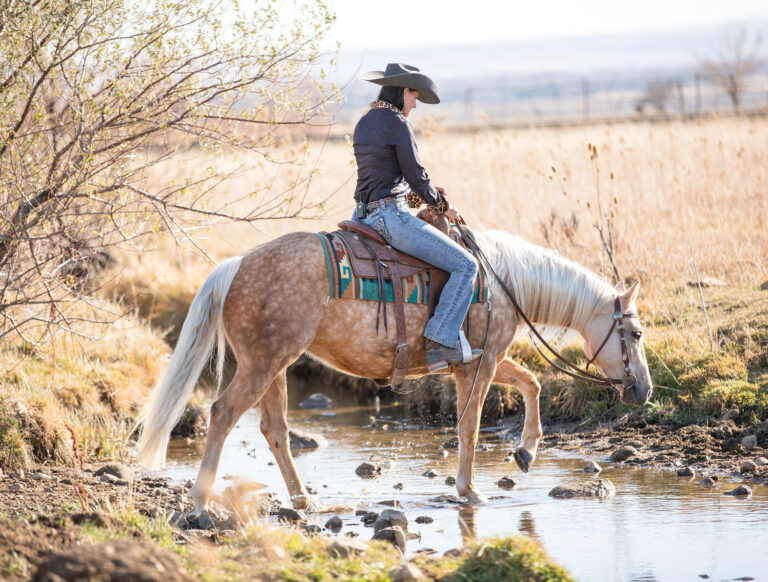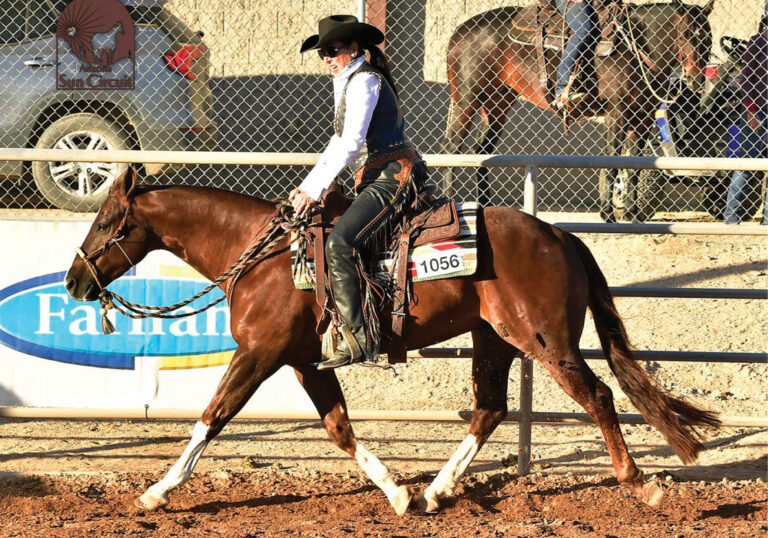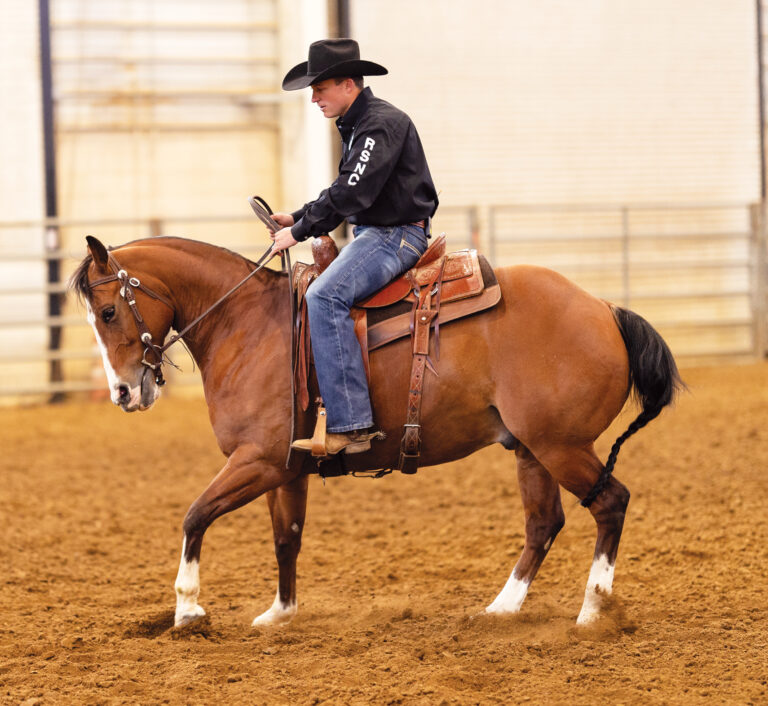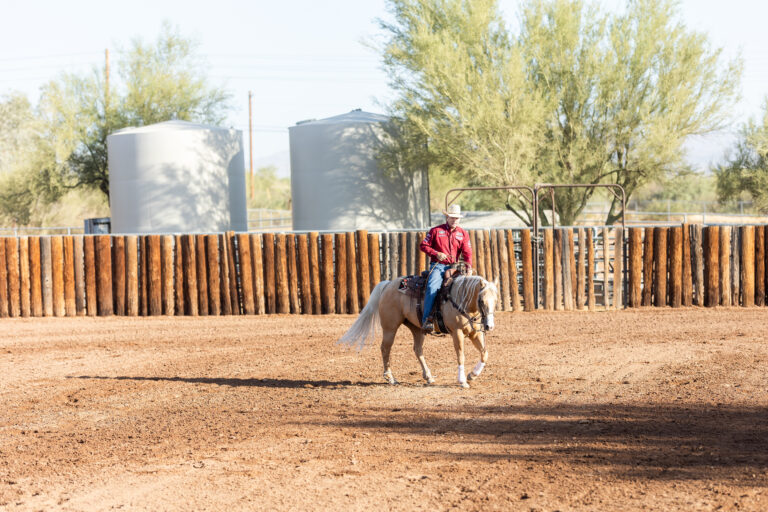A good lead departure sets your horse up for a cadenced and collected lope. But when you’re in the process of teaching your horse to lope off, it’s easy to leave him feeling trapped, instead. To avoid frustration, I like to use a counter-arc drill that leaves him soft and responsive to my cues. Read on to see how you can apply my drill during your next ride.
To have a successful lead departure your horse needs to be relaxed and in the bridle. But when teaching him to go from walk to lope it’s natural to want to capture your horse in the face while kicking him forward with your spur. Instead of encouraging your horse to move forward, all you’re doing is giving him a reason to protest and escape the pressure.
To avoid that problem, I like to introduce my horse to a counter-arc that allows him to feel the reward that comes with going forward. By applying this counter-arc you’re helping your horse move his shoulders over while driving from the hind end, leaving him soft in his face and responsive to your leg cues.
This drill also helps you prepare your horse for lead changes. By putting your horse into a counter-arc you’re positioning him so that his shoulders stay up, while he’s driving forward with his hindquarters. When it comes time to change leads, you’ll be able to cue him into the next lead without having him brace against your leg or dive into the next direction.

One
Before I even think about loping off, I focus on teaching my horse the shape she needs at the walk. Here I’m setting her up for a left-lead lope departure, so I want her nose tipped to the left, and I want her hindquarters slightly to the outside of the circle. I shouldn’t need to dig my spur into her side to get her to move forward and over; instead I want to be able to use my calf.
If my horse is dull to my cue and I’m having to go to more spur, I’m going to run into trouble with getting the forward motion I need for a lope departure. I need to take a step back, keep her on the circle for a bit longer, and get her off my leg before asking her to lope off.

Two
My first attempt at a lope departure, my horse put her head in the air and lost the collection in her body. When this happens, it’s easy to want to go to your hand and start bumping your horse’s face to get the collection back. That’s only going to make your horse more resentful of loping off, because when he lopes off, he’s immediately met with you bumping his face and taking away the forward motion.
Instead, I’m just going to break my horse to the walk and start the drill over.

Three
I take my horse back into a counter-arc at the walk, and work on getting her to soften in the bridle and move off my leg before asking for a second lope departure. I put her into a circle, and have her nose to the outside of it and her hip slightly to the outside of it. Because she’s not standing her shoulders up the way I would like for her to, I go to my left leg to encourage her to lift her shoulders up. My right hand is lower while my left hand is up, which will help reinforce that correction.

Four
When I’m ready to ask for the left-lead lope departure again, I apply my right calf and use a verbal cue. If she doesn’t respond to the verbal cue, I ask once more. If at second chance she doesn’t lope off, I will counter-arc her a couple of more circles until she relaxes. Then I’ll give her the cue again, inviting her to go forward and do something.

Five
This time when she lopes off, she stays softer in her face and goes forward into the lope when I use my verbal cue and outside calf. It’s still not perfect, but it takes a long time to get a better result, so I’m going to reward the progress we have made and let her continue loping for a bit as a reward.

Six
After a few laps of loping, I break my horse back to the walk and test my counter-arc again. This time, my reins are loose, and my fingers are just barely wrapped around the reins because my horse wants to stay soft in her face and body. She’s a little behind the bridle, but right now I’m not worried about that. Instead, I want to focus on her staying soft in her face and feet, and staying relaxed with her hind end waiting on me to cue her forward.
This is the kind of progress I’m looking for, so I might ask for her to lope off once more this direction before reversing and going to the right.
[Watch: Don’t Turn Back to Bad Habits]






